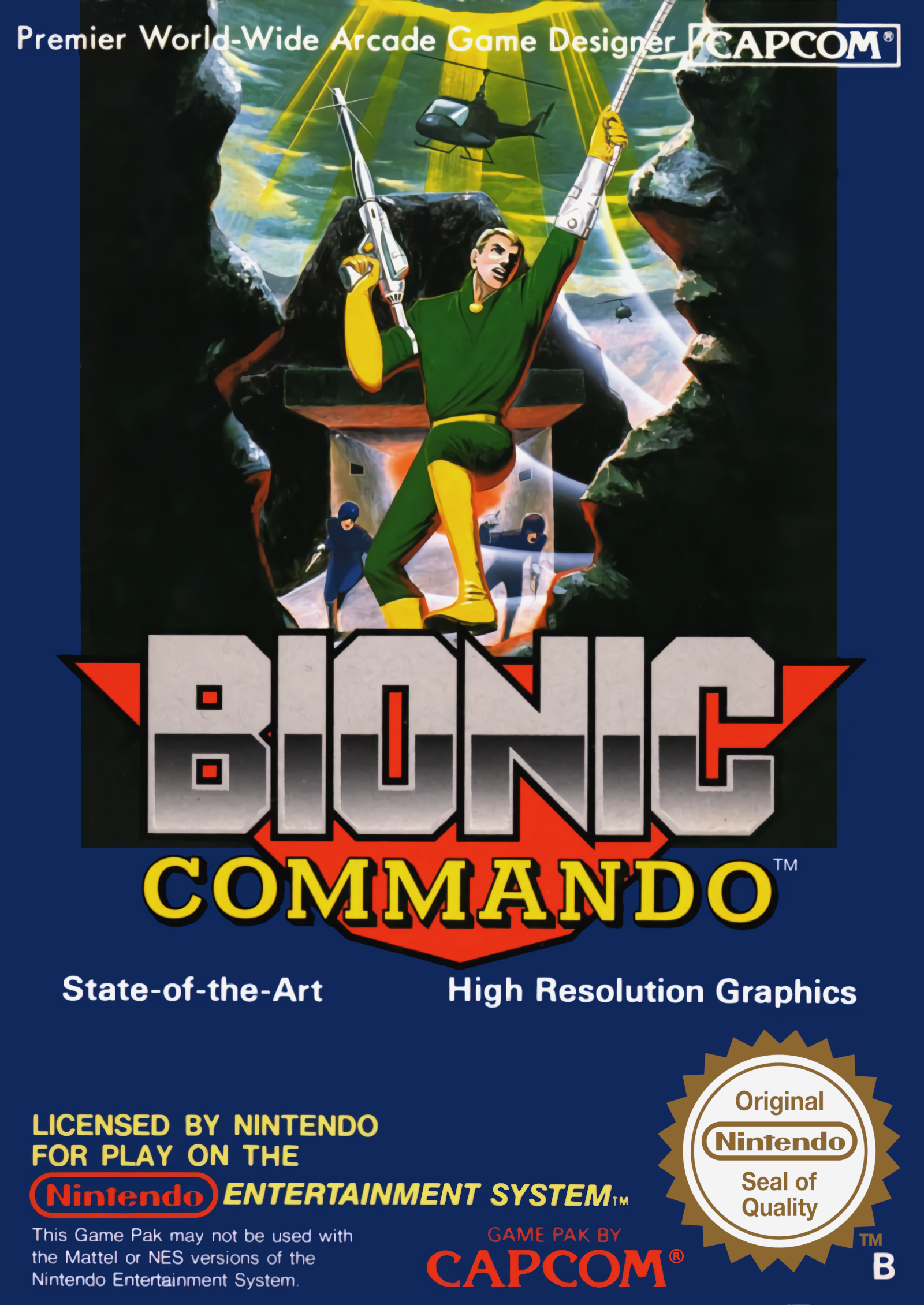
BIONIC COMMANDO
Bionic Commando, released for the NES in 1988 by Capcom, stands as a shining example of artistic ingenuity within the constraints of 8-bit gaming. Unlike many platformers of its time, Bionic Commando distinguishes itself through its unique grappling hook mechanic, but its true artistic merit lies in its meticulously crafted visuals and atmospheric design that transform each level into a vivid, immersive experience.
At the heart of Bionic Commando’s artistic appeal is its detailed sprite work and innovative animation. The protagonist, Rad Spencer, is rendered with a distinct and expressive sprite, complete with a flowing cape and dynamic movements that convey both strength and agility. The enemies are equally well-designed, each with unique silhouettes and attack patterns that make encounters visually engaging and strategically diverse. Capcom’s attention to detail ensures that every character, from the nimble soldiers to the imposing bosses, stands out against the richly designed backgrounds.
The game’s environments are masterfully constructed to evoke a sense of depth and realism. From dense urban battlegrounds and industrial complexes to lush jungles and eerie underground facilities, each level is a testament to thoughtful artistic direction. The use of a varied color palette enhances the visual diversity, with each area boasting its own unique set of colors and lighting effects that set the mood and tone. The backgrounds are layered with intricate details, such as flickering lights, scattered debris, and textured surfaces, which add layers of complexity and immersion to the gameplay.
One of Bionic Commando’s standout features is its seamless scrolling and smooth transitions between different sections of each level. This fluidity not only maintains the game’s pacing but also preserves the integrity of its visual storytelling. The dynamic environments respond to Rad’s actions, with destructible elements and interactive objects that contribute to a living, breathing world. This level of interactivity was rare for NES titles, showcasing Capcom’s commitment to creating a visually engaging and artistically rich game.
The animation in Bionic Commando is another key aspect of its artistic success. Rad’s grappling hook, a central gameplay mechanic, is animated with precision, allowing for fluid and responsive movements that feel natural and integral to the character’s design. Enemy movements and attack patterns are equally smooth, enhancing the overall visual harmony and making each battle a visually stimulating experience.
Moreover, the game’s visual storytelling is enhanced by its well-designed cutscenes and in-game events. These moments are seamlessly integrated into the gameplay, providing narrative context without disrupting the flow. The artistic choices in these sequences, from character expressions to environmental cues, effectively convey the story’s progression and the challenges Rad faces, enriching the player’s emotional connection to the game.
The soundtrack of Bionic Commando complements its visual artistry perfectly. The music, composed by Takashi Tateishi, features a blend of intense, action-packed melodies and atmospheric tunes that enhance the game’s mood and setting. Sound effects, from the whir of the grappling hook to the clashing of metal, are intricately tied to the visual actions, creating a cohesive and immersive sensory experience.
In conclusion, Bionic Commando on the NES is a testament to how artistic vision and technical skill can converge to create a compelling and visually stunning game. Its detailed sprite work, rich environments, fluid animations, and seamless visual storytelling elevate it beyond a standard platformer, making it a memorable and artistically significant title in the history of 8-bit gaming. Bionic Commando not only offers engaging gameplay but also stands as a remarkable piece of interactive art that continues to be appreciated for its visual craftsmanship and atmospheric depth.

